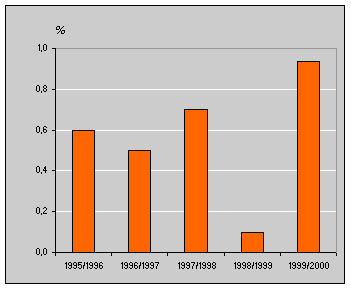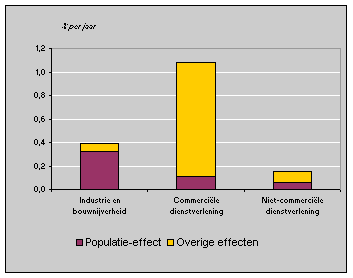Large rise in incidental wage 2000

Hourly wage rates of employees rose by 4.3 percent between December 1999 and December 2000. Most of this increase was the result of the outcome of negotiated collective labour agreements. The remainder of the wage increase is the incidental wage increase. In 2000 the incidental increase in hourly wage rates amounted to 0.9 percent. This is more than in the preceding years.
Incidental developments in hourly wage rates

Changing group of employees
An important part of the incidental wage increase can be explained by changes in the composition of the employee population. For example, if large numbers of young people and part-time workers enter the labour market, as was the case in 1998/1999, this will have a negative effect on the average incidental wage increase. Young people earn on average less than older workers. In addition, extra allowances and bonuses also have an effect on incidental wage developments in times of labour shortage.
Incidental development of hourly wage rates by industry, 1996-2000

Highest incidental wage increase in commercial services
In the last four years the increase in incidental wages was highest in commercial services: an average 1.1 percent per year. In manufacturing and construction and non-commercial services the incidental rises were much smaller.
Remarkably in manufacturing and construction the development of incidental wages is nearly completely caused by a change in the population of workers in these sectors. This in turn is probably caused by the increase in the average age of workers in this sector. In commercial services, it is the group of "other effects" that determine the incidental increase. In commercial services extra high wages were probably paid between 1996 and 2000 because of the labour shortage.
Mark Zuiderwijk